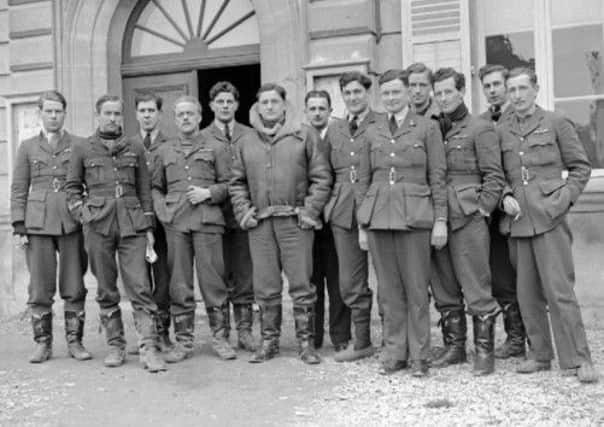Meet one of the most colourful fighter pilots...


A direct descendant of Sir Francis Drake, he was born in London and educated in Switzerland.
He joined the RAF in 1936 and, after training, was posted to the Hawker Fury-equipped No 1 Squadron at RAF Tangmere. In October 1938, the unit re-equipped with Hawker Hurricanes, and following the outbreak of war, left for France.
Advertisement
Hide AdAdvertisement
Hide AdOn April 19, 1940, flying from Vassincourt, Drake shot down a Bf 109 during his first encounter with the Luftwaffe.
On May 10, he shared in the shooting down of a He 111, but three days later, after destroying a Do 17, he was shot down by a Bf 110. Drake managed to bale out successfully, but was injured with shell splinters in his back.
After a spell in a French hospital, he returned to England and was posted to a training unit as an instructor. On 0ctober 2, he returned to Tangmere to join No 213 (Hurricane) Squadron and claimed a probable Bf 109 eight days later. In December, he joined No 421 Flight, flying Spitfires on low-level reconnaissance patrols over the Channel. While with the unit, he claimed two Do 17s destroyed before the end of the year, was awarded the DFC, and damaged two Ju 88s in early January 1941.
In October 1941, Drake was posted to No 128 Squadron in Sierra Leone where he shot down a Vichy Martin bomber. In April 1942, he took command of No 112 (Kittyhawk) Squadron in the North African Western Desert. Over the next eight months he became the leading British ace on the type, shooting down 17 enemy aircraft and destroying many others on the ground.
Advertisement
Hide AdAdvertisement
Hide AdPromoted to Wing Commander in January 1942, Drake took command of the Malta Spitfire Wing at RAF Krendi and on July 7, 1943, gained his final victory when he shot down a Macchi 202 over Sicily.
In December 1943, he returned to England to command No 20 Wing of the 2nd Tactical Air Force, equipped with the Hawker Typhoon and tasked with attacking V1 sites in the Pas de Calais. His operational career came to an end in August 1944; he had destroyed 24 enemy aircraft.
MEET ANOTHER FIGURE
Paul Richey was born in London in 1916. Commissioned in the RAF in March 1937, he was posted in March 1939 to No 1 Squadron (commanded by Squadron Leader ‘Bull’ Halahan) at RAF Tangmere, then in the process of converting from Hawker Furies to Hurricane Mk 1s. On September 8, 1939, he left with his squadron for France as part of the Advanced Air Striking Force.
Based at Vassincourt, on March 29, Richey achieved his first success by destroying a Bf 109 near Metz. During the Battle of France, Richey destroyed nine enemy aircraft but had to be evacuated out of France on June 14 after being wounded when attacking a Heinkel bomber.
Advertisement
Hide AdAdvertisement
Hide AdAfter recovering back in England, following periods as a fighter controller at Middle Wallop and as an instructor, he returned to operations and was posted in April 1941 to No 609 Squadron. With 609 he shot down two Bf 109s and damaged a further four.
Following publication of his book Fighter Pilot (originally published anonymously in 1941) he took up staff appointments until he was posted back to No 609 Squadron, in command, to fly the Hawker Typhoon. After this post he left for the Far East to command the No 165 Wing at Comilla, Bengal. Suffering from severe sinusitis, he was relieved of his command and was invalided back to the UK in February 1944.
This article, written by David Coxon, Tangmere Military Aviation Museum’s curator, is the second in a series of monthly articles on the people of RAF Tangmere. More information on the museum, including opening times and entry prices, can be found at www.tangmere-museum.org.uk